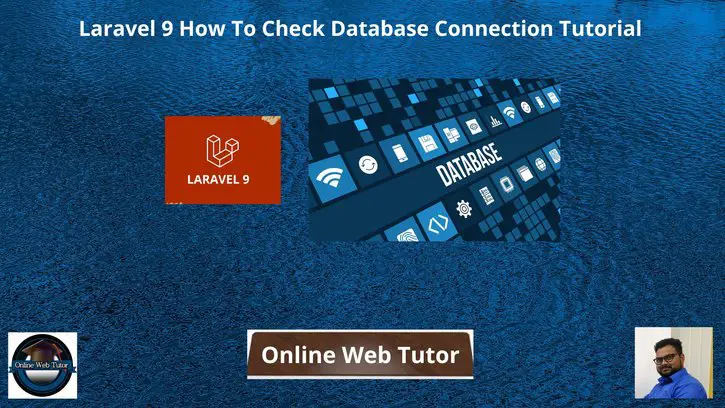Inside this article we will see the concept i.e Laravel 9 How To Check Database Connection Tutorial. Article contains the classified information about How To check active database connection in Laravel.
If you are looking for a solution i.e how to check database is connected in laravel application or not then this article will help you a lot for this. Tutorial is super easy to understand and implement it in your code as well.
This article is not version specific, you can use use it with Laravel v7, v8, v9.
Read More: Laravel 9 Call Artisan Command From Closure Routes
Let’s get started.
Laravel Installation
Open terminal and run this command to create a laravel project.
composer create-project laravel/laravel myblogIt will create a project folder with name myblog inside your local system.
To start the development server of laravel –
php artisan serveURL: http://127.0.0.1:8000
Assuming laravel already installed inside your system.
Create Database & Connect
To create a database, either we can create via Manual tool of PhpMyadmin or by means of a mysql command.
CREATE DATABASE laravel_app;
To connect database with application, Open .env file from application root. Search for DB_ and update your details.
DB_CONNECTION=mysql DB_HOST=127.0.0.1 DB_PORT=3306 DB_DATABASE=laravel_app DB_USERNAME=root DB_PASSWORD=root
Methods To Check DB Connection
Back to project terminal and run this command to create a controller file.
$ php artisan make:controller SiteControllerAbove command will create a file i.e SiteController.php inside /app/Http/Controllers folder.
Open SiteController.php and write this code into it.
Read More: Laravel 9 Call Artisan Command From Controller Tutorial
We will see two different ways to check database connection in laravel.
Method #1
Use concept with if statement block.
<?php
namespace App\Http\Controllers;
use Illuminate\Http\Request;
use Illuminate\Support\Facades\DB;
class SiteController extends Controller
{
public function checkConnection()
{
$connection = DB::connection()->getDatabaseName();
if ($connection) {
$database = DB::connection()->getDatabaseName();
dd("Connected successfully to database " . $database . ".");
}
}
}
Concept
$connection = DB::connection()->getDatabaseName();
if ($connection) {
$database = DB::connection()->getDatabaseName();
dd("Connected successfully to database " . $database . ".");
}Output
Connected successfully to database laravel_app.OR
Method #2
Use concept with try{} catch{} block.
<?php
namespace App\Http\Controllers;
use Illuminate\Http\Request;
use Illuminate\Support\Facades\DB;
use Exception;
class SiteController extends Controller
{
public function checkConnection()
{
try {
$database = DB::connection()->getDatabaseName();
dd("Connected successfully to database " . $database . ".");
} catch (Exception $e) {
dd("There is no database connection.");
}
}
}
Output
Connected successfully to database laravel_app.We hope this article helped you to learn Laravel 9 How To Check Database Connection Tutorial in a very detailed way.
Read More: PHP How to Remove Numbers From String Tutorial
Online Web Tutor invites you to try Skillshike! Learn CakePHP, Laravel, CodeIgniter, Node Js, MySQL, Authentication, RESTful Web Services, etc into a depth level. Master the Coding Skills to Become an Expert in PHP Web Development. So, Search your favourite course and enroll now.
If you liked this article, then please subscribe to our YouTube Channel for PHP & it’s framework, WordPress, Node Js video tutorials. You can also find us on Twitter and Facebook.
